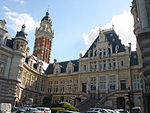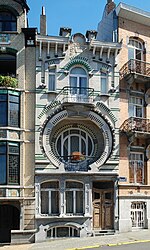Institut Jaques-Dalcroze (Brussels)
AC with 0 elementsDalcroze EurhythmicsMusic schools in Belgium
The Institut de rythmique Jaques-Dalcroze de Belgique is a music education institute based in Brussels, Belgium. It exists from the beginning of the 1950s. In 1975, the French Community of Belgium recognized it as a National Institution of Musical Education. It is located in the Clinique du Docteur Van Neck building, an Art Nouveau work built in 1910 by Antoine Pompe.
Excerpt from the Wikipedia article Institut Jaques-Dalcroze (Brussels) (License: CC BY-SA 3.0, Authors).Institut Jaques-Dalcroze (Brussels)
Rue Henri Wafelaerts - Henri Wafelaertsstraat,
Geographical coordinates (GPS) Address Nearby Places Show on map
Geographical coordinates (GPS)
| Latitude | Longitude |
|---|---|
| N 50.82134 ° | E 4.35007 ° |
Address
UCLouvain Bruxelles Saint-Gilles (Université catholique de Louvain)
Rue Henri Wafelaerts - Henri Wafelaertsstraat 47-51
1060
Belgium
Open on Google Maps






